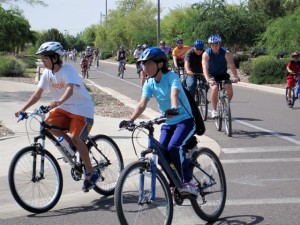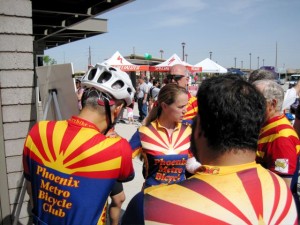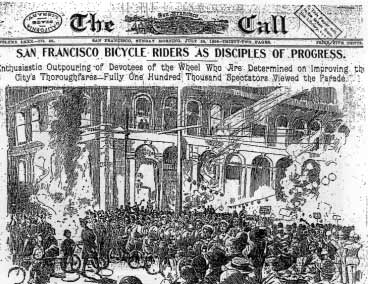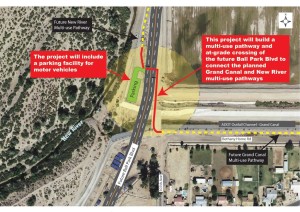Since 1956, the League of American Bicyclists, with the support of bicycle organizations throughout the United States, has proclaimed May as National Bike Month. It’s interesting to consider the impact bicycling has had on our culture.
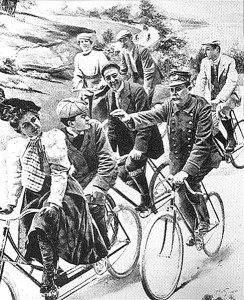 In the late 1800s, times were undergoing tremendous change. Inventions such as the telephone and the light bulb were poised to radically change America. Mechanized farming was revolutionizing agriculture. It’s noteworthy that even with these modern inventions, 51% of all patent applications in 1899 were bicycle related – 49% were EVERYTHING ELSE combined. This is not surprising considering the importance transportation has in our culture. Some of the first automobile manufacturers, such as Ford, Rover, and Mercedes-Benz, started out with bicycles – the automobile was still years away. And these early bikes rolled on tires made by Dunlop and Michelin. The bicycle was the mother of inventions such as pneumatic tires, statistical quality control, alloying of metals for light weight and strength, road maps, driver’s licenses, vehicle insurance, and sadly, planned obsolescence and even “chop shops”. Bicycle advertisements featured attractive models posing with the latest products. There were bicycle ambulances, bicycle postmen, and even bicycle traffic cops (often ex-bicycle racers) who would chase down and ticket “scorchers” – what we now refer to as “speeders”. The inventors of the era’s high-technology, the “aero plane”, were bicycle manufacturers Orville & Wilbur Wright. In fact, Orville was a former bike racer himself! The bicycle was as influential in the 1890s as the personal computer was in the 1990s
In the late 1800s, times were undergoing tremendous change. Inventions such as the telephone and the light bulb were poised to radically change America. Mechanized farming was revolutionizing agriculture. It’s noteworthy that even with these modern inventions, 51% of all patent applications in 1899 were bicycle related – 49% were EVERYTHING ELSE combined. This is not surprising considering the importance transportation has in our culture. Some of the first automobile manufacturers, such as Ford, Rover, and Mercedes-Benz, started out with bicycles – the automobile was still years away. And these early bikes rolled on tires made by Dunlop and Michelin. The bicycle was the mother of inventions such as pneumatic tires, statistical quality control, alloying of metals for light weight and strength, road maps, driver’s licenses, vehicle insurance, and sadly, planned obsolescence and even “chop shops”. Bicycle advertisements featured attractive models posing with the latest products. There were bicycle ambulances, bicycle postmen, and even bicycle traffic cops (often ex-bicycle racers) who would chase down and ticket “scorchers” – what we now refer to as “speeders”. The inventors of the era’s high-technology, the “aero plane”, were bicycle manufacturers Orville & Wilbur Wright. In fact, Orville was a former bike racer himself! The bicycle was as influential in the 1890s as the personal computer was in the 1990sAlso see related post: Bicycle Riders as Disciples-of Progress.
Board Member, Verde Valley Cyclists Coalition




